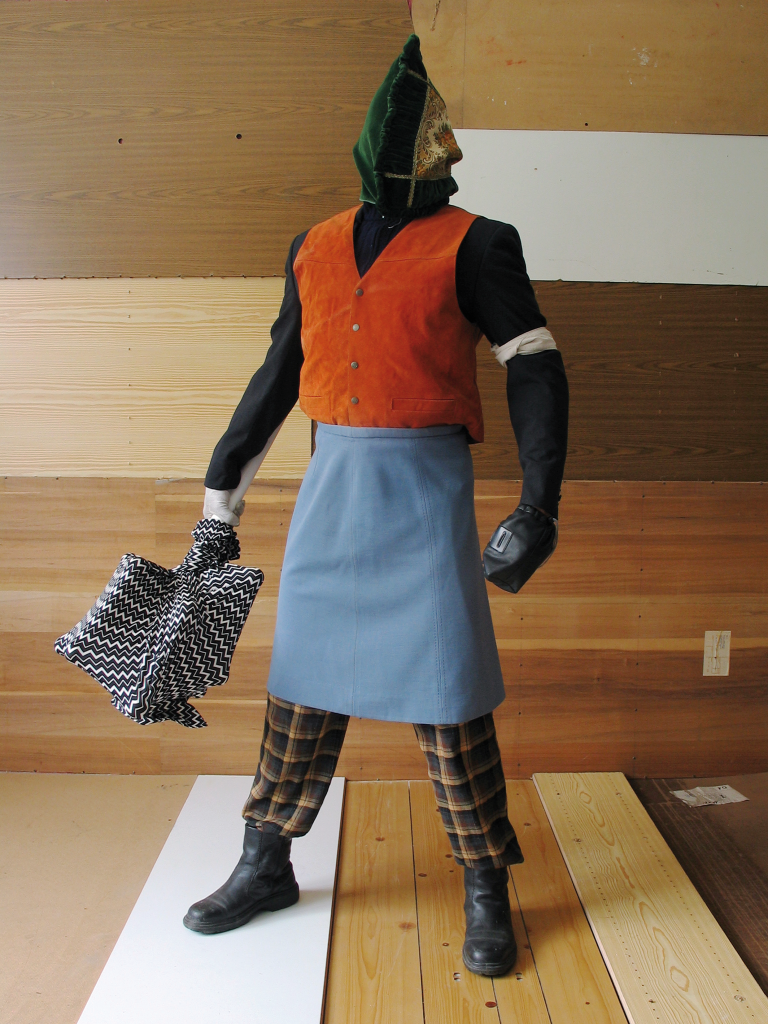Thorsten BrinkmannFound Self-Portraits

How do we construct an image of nobility? Is nobility shown in the signifiers of wealth and power or is it shown by character and poise? These are the questions behind the opus of Thorsten Brinkmann. I say opus because this artist does not simply create photos, he creates environments. He goes out to the junkyards, flea markets and dumpsters of the world to find the materials for his art. With those materials he builds walls, floors and furniture so that the end result resembles the apartment of a scavenger. Every dwelling needs something on the walls, so he decorates his space with photographic self-portraits. These portraits show him almost completely obscured by more of his objects trouvés. The backdrops for the photos are themselves created environments, reinforcing the sense of a manufactured space. What are we to make of these thrift-shop portrait galleries? Taken as an installation, they are reminiscent of the grand halls in the mansions and castles of past centuries where the wealthy hung portraits reflecting their status in the world. Luxurious fabrics, escutcheoned armour and priceless jewellery combined to herald the sitter’s unquestionable power and influence. Brinkmann turns this on its head. While he never directly quotes from classical and renaissance painting, his stance and posture in these images make quite clear in which context the author places his work.
By echoing this tradition, Brinkmann’s self-portraits poke fun both at himself and at that tradition itself. For instance, in Rain Mc Keul or Hopi Green Holding Kni the artist preens in a mock-heroic pose that harks back to Velázquez and his depiction of Phillip IV. In Bigi Di Innozenzia and Henri Van Ed we see poses that would not be out of place in the Uffizi, next to Piero della Francesca’s Duke of Urbino. These images are presented with real wit and humour.
However, the joke is also on us since he has upholstered himself in what we have thrown away. Just as the Duke’s red frock and hat denote the hierarchy of their time, the garish colours, cheap patterns and unmistakable texture of real vinyl speak volumes of a disposable culture and an underclass that wears what others discard. Phillip IV trusted Velázquez to use fashion in all its manifestations to define his character and power. Brinkmann uses those same tools — fabric, clothing, the artefacts of a life of leisure — to show us a figure of nobility made entirely from what society labels garbage. He is showing us that nobility is represented by a sense of dignity and individualism that the camera discovers with the help of a knowing artist.
The Castilian ruff is replaced by a faux fur stole, the armour is replaced by a dented bucket, and the robes of velvet have been traded for a cheap knit print. Brinkmann places the objects within a framework of social values and asks us to think about whether these discarded items still have worth. For me, the most satisfying thing about this work is that, when we see ourselves in it, we choose to own it. Then, in our own mansions and castles, it questions us about what is truly valuable.
